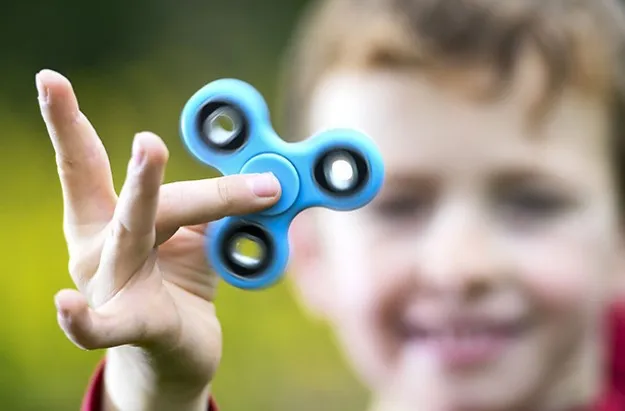Fidget Spinners: Therapeutic Tool for Kids with Special Needs
In recent times, fidget spinners have become a popular item that children love to play with, and while some have debated their usefulness in public settings, they have proven to be a powerful tool for children with special needs, particularly those struggling with sensory processing issues, ADHD, and other neurological disorders. The repetitive motion and tactile experience of spinning the device have a calming effect on children with sensory processing issues, allowing them to concentrate better and be more alert.
Let’s delve deeper into the therapeutic nature of fidget spinners and explore how they help children with special needs, particularly those with sensory processing issues, ADHD, and autism. We will also examine some of the debates surrounding the use of fidget spinners in classrooms and public places, and take a balanced approach by presenting both sides of the argument.


The Benefits of Fidget Spinners for Kids with Special Needs
Fidget spinners are small, handheld devices designed to provide an outlet for pent-up energy and anxiety. They consist of a central axis with two or more arms that spin around it. The primary objective of fidget spinners is to provide sensory input, which can be helpful for children who struggle with self-regulation, particularly those with ADHD, autism, or other sensory processing issues.
For children with special needs, fidget spinners can serve as a therapeutic tool. The repetitive motion of spinning the gadget has a soothing effect on the child, helping them to focus, stay alert, and manage overwhelming sensory input. Studies have shown that fidgeting can help children with ADHD to focus their attention on a task and tune out distractions, which could aid their learning and academic performance in the classroom.
A recent study conducted by the University of California, Davis, found that fidget toys improve attention and reduce impulsivity in children with ADHD. The study reported that fidgeting can help children with ADHD to focus their attention on a task and tune out distractions, which could aid their learning and academic performance in the classroom. This highlights the therapeutic benefits that fidget spinners can have for children with ADHD, as it could help to reduce the frequency and severity of their symptoms.
Furthermore, fidget spinners have been deemed beneficial for children with autism who face social or communication problems. They can help alleviate anxiety, particularly in social settings, by providing an outlet for excess energy and calming the child, leading to a reduction in their stress levels.
Can Fidget Spinners Help Children With Social Or Communication Problems?
Yes, fidget spinners have been known to help children with social or communication problems, particularly those with autism. Children with autism often struggle with sensory processing issues and experience stress or anxiety in social settings, where they may have trouble communicating with others adequately. Fidget spinners can provide an outlet for excess energy and help calm the child, leading to a reduction in their stress levels. This can help children with autism to better manage their emotions and handle social situations with more ease. Additionally, fidget spinners can serve as a conversation starter, as peers may approach the child to ask about their spinner, which can help facilitate social interactions.
The Other Side of the Story
While fidget spinners have been deemed beneficial for children with special needs, there are some debates surrounding their use in public settings and classrooms. Some believe that fidget spinners can be a disruption to others if misused, as the buzzing noise, colorful designs, and the sensation of spinning the gadget can be distracting to others in the vicinity. This has led to some schools banning fidget spinners on their premises altogether.
Another issue surrounding with fidget spinners is their quality. The fidget spinner trend has led to some manufacturers producing low-quality products that can be potentially harmful to children. Some fidget spinners contain small parts that can be easily swallowed, which pose a choking hazard, and others have been known to break easily, causing injuries.
It’s essential to consider safety measures when using fidget spinners with children. Parents and teachers should supervise the use of these gadgets to avoid any accidents, ensure that the spinner is of high quality, and that it meets safety standards. If used in public places, children can use them discreetly, so as not to attract unnecessary attention or become a distraction to others.
Conclusion
Fidget spinners can be a beneficial tool for children with special needs, particularly those struggling with sensory processing, ADHD or autism. The repetitive motion and tactile experience of spinning the gadget has a calming effect on children with sensory processing issues, allowing them to concentrate better and be more alert. The therapeutic benefits of fidget spinners for children are scientifically-backed, and their use can significantly benefit children’s learning and academic performance.
It’s essential to consider both sides of the argument when it comes to the use of fidget spinners in public places or classrooms. While fidget spinners have their benefits, the misuse or low quality could make them a potential hazard or a disruption to others.
In conclusion, the use of fidget spinners as a therapeutic tool for children with special needs has been shown to be highly beneficial. Parents and teachers should carefully assess the benefits and disadvantages and ensure that the children’s safety is of utmost importance. By incorporating fidget spinners into the learning process, we can help children with neurological conditions reach their full potential, regardless of their condition.
